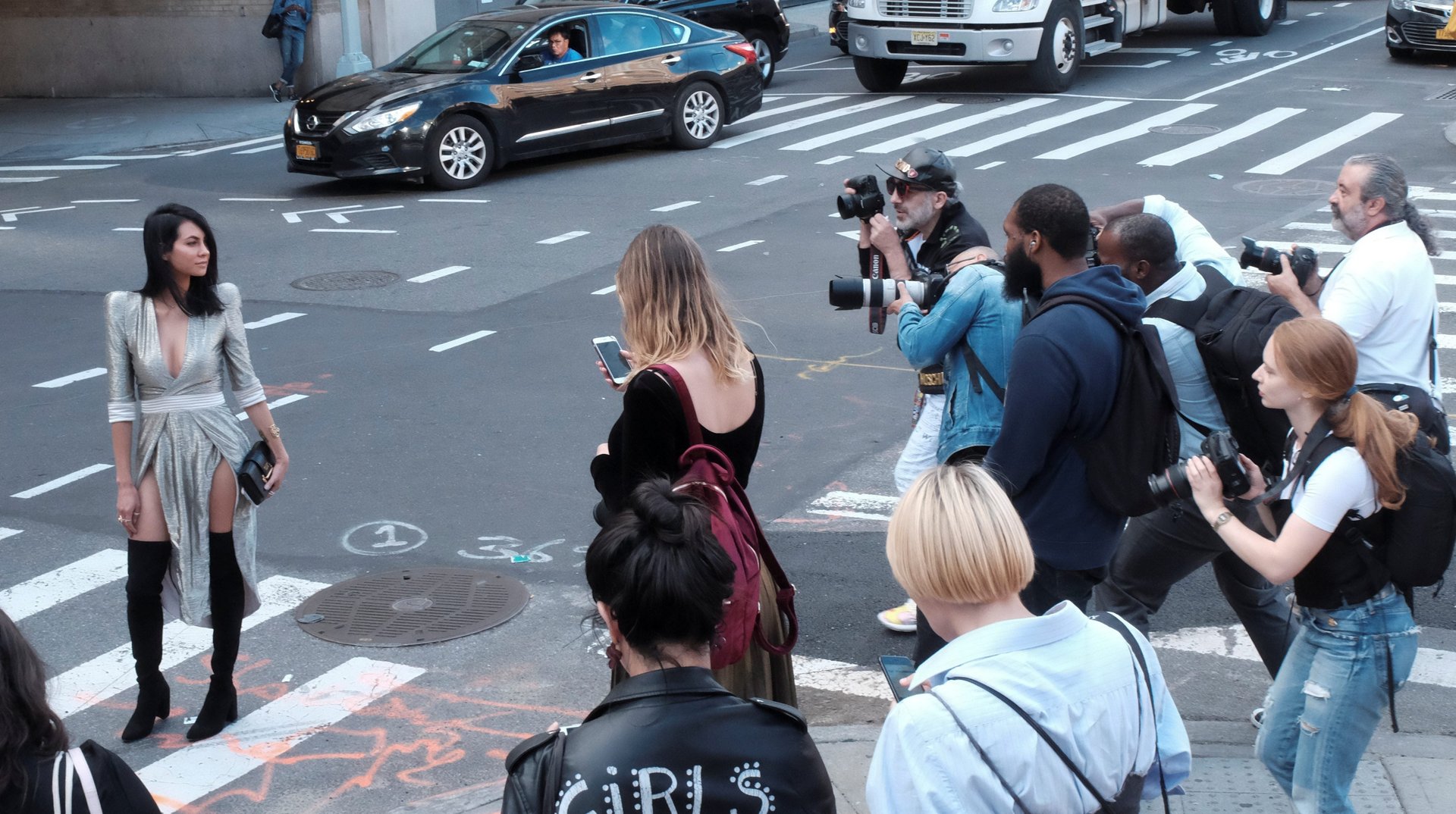Street-style photographers are shaming brands and influencers who use their work for free
A battle is brewing between street-style photographers and the well-dressed influencers they often photograph. It hinges on who is making more money off their deeply intertwined relationship, and who is really using whom.


A battle is brewing between street-style photographers and the well-dressed influencers they often photograph. It hinges on who is making more money off their deeply intertwined relationship, and who is really using whom.
If you haven’t been to a big fashion show in person, here’s what the scene outside generally looks like: A horde of street-style photographers will be running and crouching to snap the well-dressed, or at least interestingly dressed, as they pass, including influencers who are there to be seen as much as to see. Later, those street-style photographers will post their shots on their blogs and social accounts. The influencers will find the images of themselves, and often repost them on their own accounts.
For both sides, the goal is content that will first draw followers, and ultimately companies willing to pay them for their services. The photographers can get gigs shooting for fashion magazines or doing projects for brands. Influencers may be hired to wear a brand’s clothes or promote its products. In theory, both sides benefit.
But a group of more than two dozen photographers says they’re getting short-changed by this system. They’ve formed an unofficial union to demand that influencers, bloggers, and brands stop using their photos without permission. To make their point heard, they’re campaigning on Instagram with the hashtag #NoFreePhotos, which they’ll use instead of tagging or crediting the influencer pictured, as they normally would have.
According to a statement from the photographers obtained by WWD (paywall), their anger is due to the fact that they spend a lot of time, energy, and money traveling back and forth to shows to get these shots. The influencers, they argue, are often at the shows because brands have paid them to be photographed in their clothes, with the expectation that they’ll share the images and publicize the brand. But rather than hire their own photographers, they rely on street-style photographers to snap their pictures, and then simply take that copyrighted work without paying them or even asking permission much of the time. The brands themselves might even share those photos in news releases.
“These partnerships drive millions of dollars’ worth of sales and hinge on our work, yet few photographers ever get paid for their service and that just isn’t right,” photographer Adam Katz Sinding told the New York Times (paywall). “An occasional tag is not enough and it doesn’t pay the bills.”
But on the other side, well-known fashion blogger Bryanboy posted a rebuttal to the photographers on his Instagram page. “While I have enormous respect to all of these lensmen (and women), the notion that many influencers are being ‘disproportionately’ paid to wear clothes is quite laughable,” he wrote. Bloggers, he says, often aren’t paid at all, and are frequently racking up travel expenses themselves as they go pick clothes up at showrooms or fly to the next set of shows. They eat the costs to maintain their relationships with brands, in the hopes that a paid job could result. Too often they don’t.
He also raised the point that photographers may sell the photos they take of influencers but never have the influencers sign model-release forms. “Imagine if every influencer or editor or fashion person started complaining that their images are being taken AND sold without authorization? Class action lawsuit much?”
Why hasn’t either side gone to court? Legal battles can happen. But to bring a fight to court is costly and time-consuming. Both sides also acknowledge that it’s a symbiotic relationship, and they don’t want to end it. The photographers pointed out that they intended “no malice” with their action.
Both sides are in a tough position, though. Only the top street-style photographers and influencers earn large amounts. Most are scraping by, and because there’s so much competition for attention in fashion, there’s almost always someone willing to do the job for free, if it lets them start making a name for themselves. Meanwhile, the brands are often the ones that benefit most.